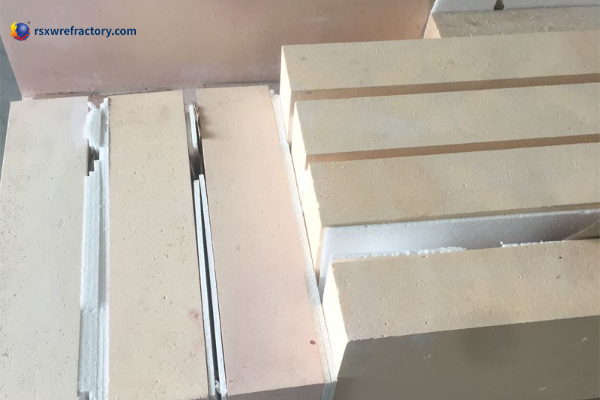Refrakterní cihly obsahující zirkonium jsou refrakterní cihly vyrobené z zirkonu a oxidu zirkonia jako hlavní suroviny. Refrakterní cihly obsahující zirkonium lze rozdělit na zirkonové cihly, cihly oxidu zirkonia, zirconium corundum bricks, and zirconite bricks according to their composition. Zirconium-containing refractory bricks have high melting points, nízká tepelná vodivost, good chemical stability, and good corrosion resistance to liquid metals and molten glass.

Zircon refractory bricks are refractory bricks made from natural zircon sand. Zircon refractory bricks include zircon bricks made by sintering single zircon and zircon bricks made by using zircon as the main raw material and adding appropriate sintering agents (most commonly refractory clay). In order to improve the performance of zircon refractory bricks, there are also special zircon bricks with other ingredients (such as high-alumina bauxite, fused corundum, or chromium oxide, atd.).
Zircon refractory bricks are acidic refractory materials, which are characterized by strong slag resistance, malý koeficient tepelné roztažnosti, thermal conductivity decreasing with increasing temperature, high load softening temperature, high wear resistance and good thermal shock resistance.
When in use, zircon bricks have high refractoriness and are not easily dissolved by chemical erosion of slag. However, slag can penetrate into the interior of the refractory bricks through the pores and react with the decomposed zircon particles to form a metamorphic layer, causing the refractory brick structure to collapse. In order to improve the effect of zircon bricks, the permeability of slag must be reduced. In actual production, while reducing the porosity of refractory bricks, high-alumina bauxite or fused alumina can be added to the zircon material to make zircon-alumina refractory bricks to improve the resistance to permeability of refractory bricks. When alumina is added to the zircon material, the refractoriness is slightly reduced. Although zircon-alumina refractory bricks have improved in terms of slag permeability resistance, their slag erosion resistance is still poor. Chromium oxide can be added to refractory bricks to enhance the erosion resistance of the matrix.

Zircon refractory bricks have good corrosion resistance and thermal shock resistance to slag and molten steel, and are suitable for working under reduced pressure. They are widely used in the metallurgical industry to build degassing ladle linings. In addition, they are also used as stainless steel ladle linings, continuous casting ladle linings, casting mouth bricks, plug bricks, sleeve bricks, and high-temperature induction furnace linings. Zircon refractory bricks have high resistance to acidic slag and glass, so they are also widely used in severely damaged parts of glass kilns. Zircon refractory bricks also have the property of not being impregnated by metal chromium, aluminum oxides and their slag, so they are also used on the bottom of aluminum smelting furnaces to achieve good results. In addition, crucibles, tubes, boats, dishes and experimental containers made of zircon are widely used in high-temperature related occasions.
 Skupina Rongsheng
Skupina Rongsheng

WeChat
Naskenujte QR kód pomocí wechat